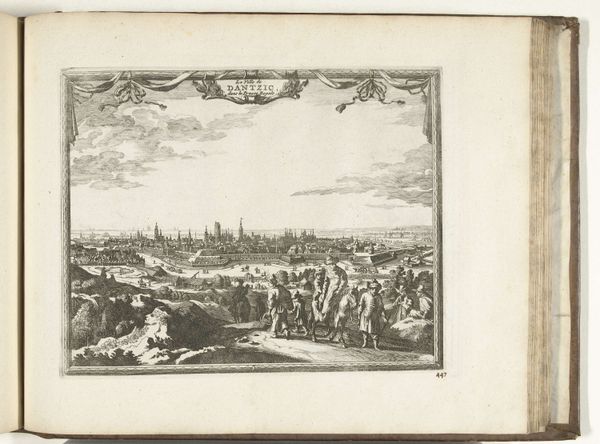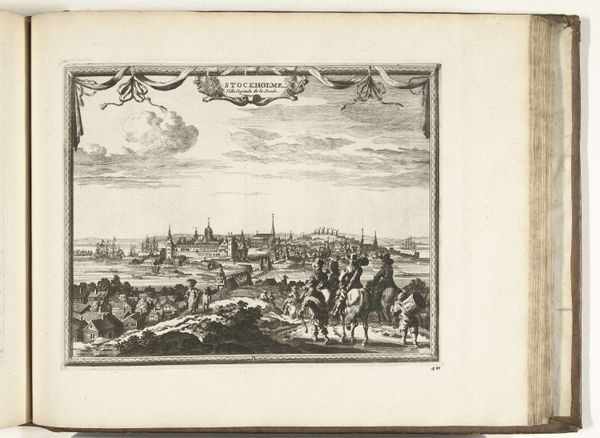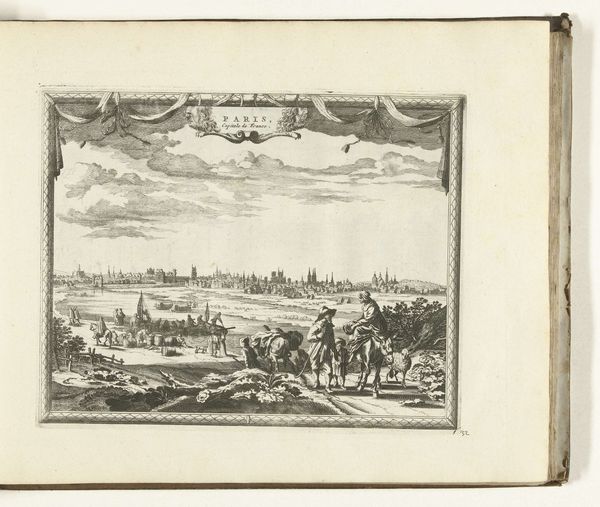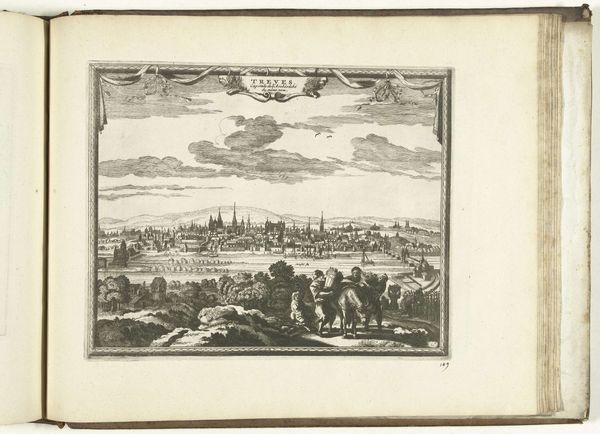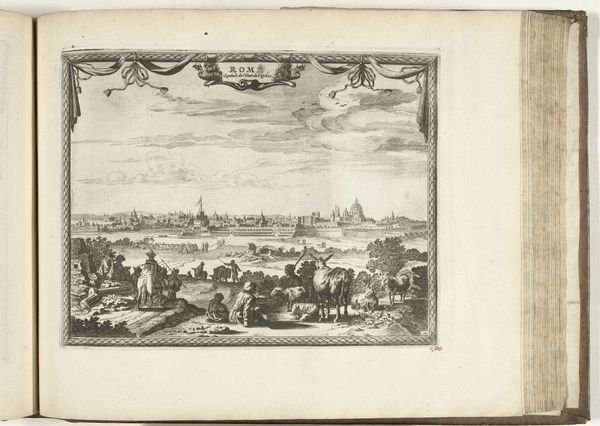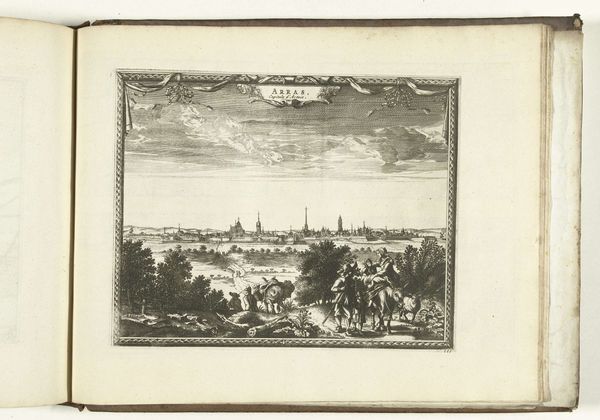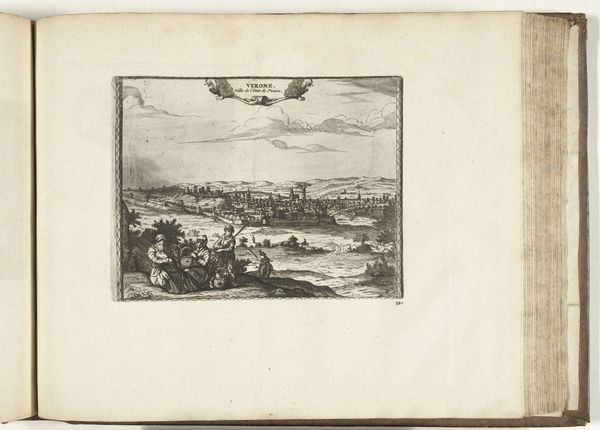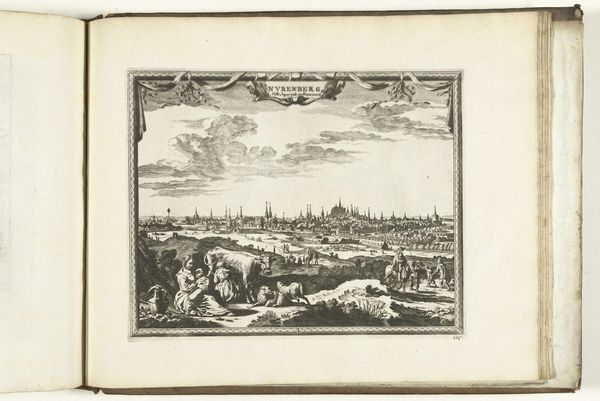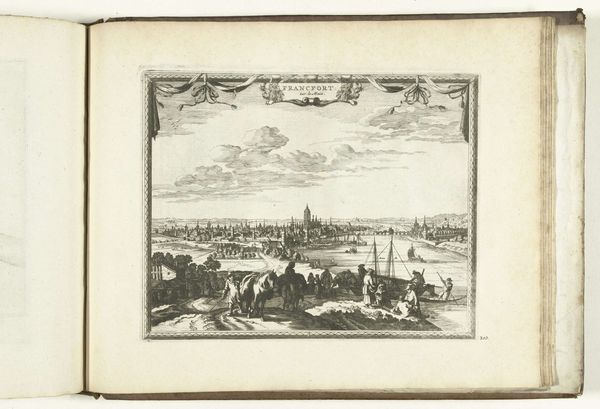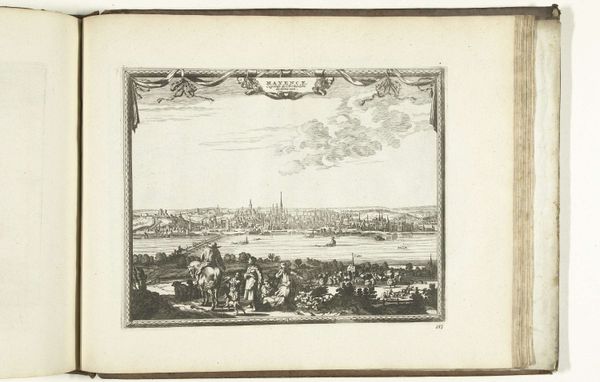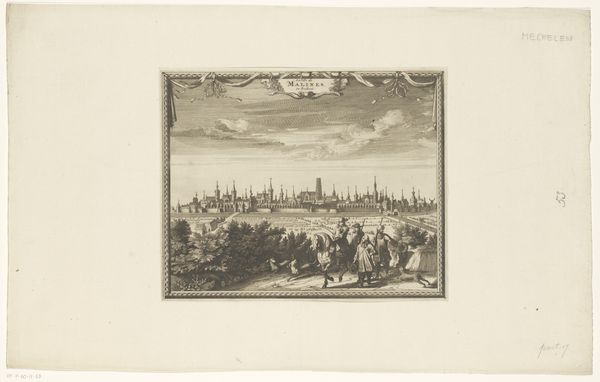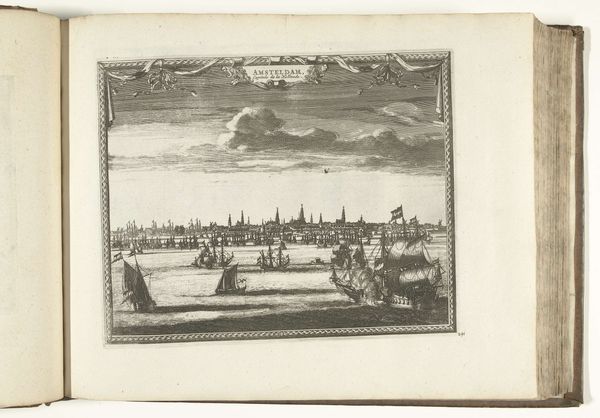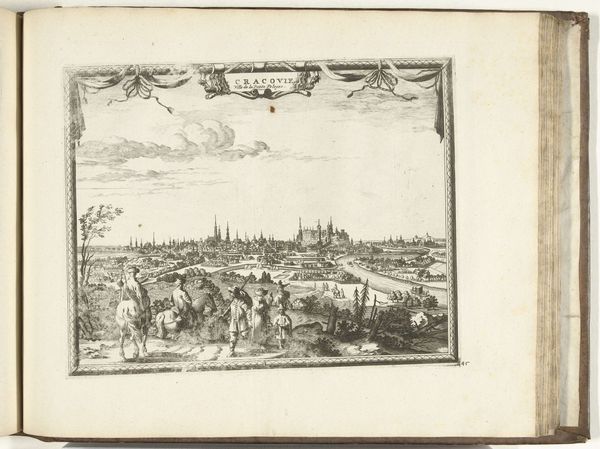
print, engraving
#
narrative-art
#
baroque
# print
#
landscape
#
cityscape
#
history-painting
#
engraving
Dimensions: height 220 mm, width 274 mm
Copyright: Rijks Museum: Open Domain
This print of Prague was made in 1726 by an anonymous artist, using the technique of etching. Etching is a printmaking process that relies on metal plates, acid, and careful handwork. The artist coats a metal plate with a waxy, acid-resistant substance, then scratches an image into the wax. The plate is then immersed in acid, which bites into the exposed metal, creating lines. Ink is then applied to the etched lines and the plate is pressed onto paper, transferring the image. The act of etching itself requires skill and precision, and this artisan labor results in detailed, repeatable imagery that, due to printmaking, is reproducible. The proliferation of images like this one allowed for the wide dissemination of a particular vision of Prague, shaping public perception of the city, and contributing to the growth of tourism. Considering the material and process of creation allows us to understand its cultural significance.
Comments
No comments
Be the first to comment and join the conversation on the ultimate creative platform.
